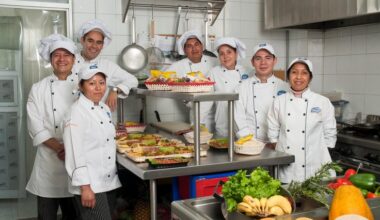Introduction
Navigating Canada’s immigration landscape can be daunting, especially for skilled professionals and families who don’t qualify under the traditional Express Entry system. While Express Entry remains a popular pathway, its points-based cut‑offs and competitive nature leave many applicants searching for alternative routes. In this comprehensive guide, we explore employer‑driven sponsorship streams, Provincial Nominee Programs (PNPs), regional pilots, and sector‑specific opportunities that bypass Express Entry altogether. Whether you’re a recent graduate, seasoned engineer, or caregiver, understanding these pathways—and how to secure a job offer tied to a Labour Market Impact Assessment (LMIA)—can dramatically increase your chances of obtaining a Canadian work permit and Permanent Residence.
Understanding Canada’s Express Entry System
Canada’s Express Entry system manages three main federal economic-class programs: the Federal Skilled Worker Program, the Federal Skilled Trades Program, and the Canadian Experience Class. Candidates submit profiles into an online pool, earning a Comprehensive Ranking System (CRS) score based on factors like age, education, work experience, and language proficiency. The highest‑scoring applicants receive Invitations to Apply (ITAs) during periodic draws, requiring complete documentation within 60 days. However, CRS cut‑offs often exceed 480–500 points, leaving many qualified professionals—especially those without Canadian work experience—frustrated by repeated non‑invitations. To avoid this bottleneck, alternative streams leverage employer sponsorship or provincial endorsement, providing more predictable processing times and clear eligibility criteria.
Answer Questions & Apply
Results
#1. What is your highest level of education?
#2. Do you have any work experience?
#3. What is your current country of residence?
#4. Do you have a valid international passport?
#5. What type of opportunity are you most interested in?
For tips on streamlining your documentation and avoiding common pitfalls, consult the Common Mistakes to Avoid on Your Visa Application guide.
Why Seek Alternatives to Express Entry?
Navigating Canada’s Express Entry system can be a powerful route to permanent residence—but it’s not the only one. Even well‑prepared candidates often encounter obstacles that delay their application or jeopardize approval. Below, we explore four compelling reasons to consider employer‑driven sponsorship, provincial pathways, regional pilots, and sector‑specific streams instead of—or alongside—Express Entry.
1. Employer‑Specific Work Permits
An employer‑specific work permit is tied directly to a single job offer backed by a positive Labour Market Impact Assessment (LMIA).
-
Predictable processing: Because the job offer is pre‑approved by Employment and Social Development Canada (ESDC), you know upfront that your role meets labour‑market needs.
-
Clear eligibility: You don’t need to chase CRS points—your eligibility hinges on holding that valid LMIA‑supported offer.
-
Faster work‑start: Once your permit is issued, you can enter Canada and begin employment immediately, gaining valuable Canadian work experience that can later strengthen any Express Entry profile.
2. Provincial Nominee Programs (PNPs)
PNPs allow individual provinces to nominate applicants who match their specific labour‑market demands.
-
Instant 600 CRS boost: A provincial nomination adds 600 points to your Comprehensive Ranking System (CRS) score—essentially guaranteeing an Invitation to Apply (ITA) under Express Entry.
-
Occupation‑focused streams: Many provinces run streams for tech workers, healthcare professionals, or skilled tradespeople, aligning directly with local shortages.
-
Tailored support: Provincial governments often provide settlement resources, helping newcomers integrate faster into community and workplace.
3. Regional Pilots
To encourage settlement beyond major cities, Canada introduced two pilots:
-
Atlantic Immigration Pilot (AIP): Targets employers in Nova Scotia, New Brunswick, Newfoundland & Labrador, and Prince Edward Island, offering streamlined sponsorship for full‑time roles.
-
Rural and Northern Immigration Pilot (RNIP): Enables smaller communities to nominate skilled workers, ensuring regional labour gaps are filled.
These pilots often feature faster processing and community‑driven support, making the move less overwhelming than arriving in a big metropolis.
4. Sector‑Specific Streams
Canada periodically opens targeted streams for industries experiencing acute shortages:
-
Healthcare: Home support workers, nurses, and caregivers can qualify through specialized PNPs or LMIA streams.
-
Agriculture: Seasonal agricultural worker programs and fruit‑picker roles come with dedicated sponsorship pathways.
-
Technology and Trades: Tech pilots and skilled‑trades streams bypass the general pool to focus on high‑demand occupations.
For those currently in Canada on a visitor visa and keen to transition to employment, be sure to review Is Converting Your Visit Visa to a Work Visa Possible? (Country Guide)—the same principles apply when seeking an employer‑sponsored work permit here.
Provincial Nominee Programs (PNPs): Employer & Occupation Streams
Provincial Nominee Programs (PNPs) empower Canada’s provinces and territories to select candidates whose skills and experience match local labour‑market demands. Unlike the pan‑Canadian Express Entry pool, PNPs focus on specific economic needs—whether it’s addressing a shortage of tech professionals in British Columbia or supporting experienced caregivers in Manitoba. Once you secure a provincial nomination, you receive an extra 600 CRS points, effectively guaranteeing an Invitation to Apply (ITA) for permanent residence.
Ontario Employer Job Offer: Foreign Worker Stream
Ontario’s stream is designed for foreign nationals with a genuine, full‑time job offer from an Ontario employer. Eligible positions must be in skill level 0, A, or B of the National Occupational Classification (NOC). Key benefits include:
-
Direct employer support: Your employer manages the Labour Market Impact Assessment (LMIA) process, demonstrating that no Canadian worker could fill the role.
-
Settlement assistance: The province often provides pre‑arrival and in‑province support services to help you integrate smoothly.
Many of these roles span a range of sectors, from Hotel & Restaurant Jobs Offering International Visa Sponsorship in metropolitan hubs to specialized trades in manufacturing.
British Columbia Tech Pilot
Tailored for tech talent, B.C.’s Tech Pilot targets 29 in‑demand occupations, including software developers, IT analysts, and data professionals. Highlights:
-
Accelerated processing: Tech Pilot applications are fast‑tracked, with limited or no backlog in certain occupations.
-
No minimum job offer duration: As long as your offer meets the criteria, you’re eligible.
Tech roles in B.C. often overlap with high‑growth areas like AI and machine learning—areas similarly explored in Data Science Roles with Visa Sponsorship in USA & Canada for broader North American context.
Manitoba Work Experience Pathway
Manitoba’s stream rewards candidates already working in the province with a full‑time, permanent offer. To qualify, you must:
-
Have at least six months of continuous, full‑time work experience in Manitoba.
-
Score a minimum on Manitoba’s Expression of Interest (EOI) system, which assesses factors like education, language, and community ties.
This pathway is ideal if you’ve already built local networks through co‑op placements or previous work permits.
Saskatchewan Express Entry Employment Offer
Saskatchewan’s stream bridges Express Entry and provincial nomination, requiring:
-
A valid Express Entry profile.
-
A full‑time, permanent job offer from a Saskatchewan employer in a skilled occupation.
Once provincial endorsement is granted, you receive your 600‑point boost and proceed through the Express Entry system with newfound confidence.
Canada’s PNPs mirror Germany’s model of employer‑driven sponsorship—where companies often facilitate both the work‑visa application and relocation logistics. For an international comparison of this approach, see Skilled Worker Visa Sponsorship Opportunities in Germany. By aligning your professional background with a province’s targeted needs, you not only fast‑track your path to Permanent Residence but also gain the support network of local employers and communities.
Table Category: Top Jobs Offering Visa Sponsorship in Canada
| Job Role | Salary Expectation (CAD) |
|---|---|
| No Experience Needed! Fruit Picker & Farm Work Jobs in Canada with Visa Support | CAD 30,000 – 35,000 |
| Delivery Driver Jobs with International Visa Sponsorship | CAD 35,000 – 45,000 |
| Chef and Cook Positions with Visa Sponsorship (Apply Today!) | CAD 40,000 – 50,000 |
| Kitchen Porter & Dishwasher Jobs Offering Visa Support | CAD 28,000 – 35,000 |
| Construction Jobs with Visa Sponsorship Opportunities | CAD 45,000 – 60,000 |
| Tailoring & Seamstress Jobs Offering Visa Sponsorship | CAD 35,000 – 45,000 |
Employer‑Driven Work Permits: LMIA‑Based Sponsorship
Employer‑driven work permits based on a Labour Market Impact Assessment (LMIA) offer a direct route to gaining Canadian work authorization—and potentially permanent residence—by securing a bona fide job offer. Your Canadian employer demonstrates to Employment and Social Development Canada (ESDC) that no Canadian citizen or permanent resident is available to fill the role, triggering a positive LMIA. Below, we break down the 4‑step process and key considerations.
1. Job Offer & LMIA Application
-
Securing the Offer: You and your prospective employer agree on terms—role, salary, and duration—consistent with prevailing wage rates.
-
LMIA Submission: The employer applies to ESDC, providing proof of recruitment efforts (job postings, interviews) to show the need for a foreign worker. They must also outline training or support plans for Canadians, satisfying “transition plan” requirements.
-
Processing Time: Depending on the occupation and region, ESDC’s LMIA decision can take 4–12 weeks; high‑demand sectors may benefit from priority streams.
2. LMIA Approval
-
Positive LMIA Issued: A positive LMIA confirms that hiring you will have a neutral or positive effect on Canada’s labor market.
-
Job‑Specific Work Permit Letter: You receive a copy of the LMIA and an employer‑provided letter outlining job details. These documents are essential for your permit application.
3. Work Permit Submission
-
Application Preparation: Gather your LMIA, job offer letter, proof of qualifications (degrees, certifications), and language-test results.
-
Online or Visa‑Office Filing: Submit your work permit application online through IRCC’s portal or at a designated visa office abroad. Include biometrics, fees, and a clear timeline of your intended start date.
-
Processing Outlook: Current work‑permit processing varies by country of residence but typically ranges from 2–16 weeks; you can check IRCC’s portal for up‑to‑date estimates.
4. Entry & Compliance
-
Port‑of‑Entry Documents: Upon approval, you’ll receive a Port‑of‑Entry (POE) Letter of Introduction. Present this, along with your passport, at the border to obtain your actual work permit.
-
Commence Employment: Begin your role under the conditions specified—employer, location, and duration.
-
Maintaining Status: Adhere strictly to your permit terms; unauthorized changes in role, employer, or location can jeopardize both your work permit and future PR eligibility.
-
Canadian Experience Pathway: Accumulating work experience through an LMIA‑based permit can later strengthen an Express Entry profile or PNP application.
Key Benefits & International Context
-
Employer‑Backed Security: You enter Canada with a fully approved job offer, reducing uncertainty compared to open‑pool systems.
-
Pathway to PR: Many PNP streams and the Canadian Experience Class favor candidates with Canadian work experience obtained via LMIA‑sponsored permits.
-
Global Comparisons: Similar sponsorship models exist worldwide—particularly for engineering professionals. Explore Global Visa‑Sponsored Electrical Engineering Careers for insights on how Canada’s process stacks up against international schemes. Tech specialists may also consider Data Science Roles with Visa Sponsorship in USA & Canada as a comparative lens on North American demand.
By understanding each step—from your employer’s LMIA application to your own compliance obligations—you can confidently navigate the LMIA‑based route and position yourself for long‑term success in Canada’s labour market.
Global High‑Demand Visa Sponsorship Jobs
| Job Role | Salary Expectation (CAD) |
|---|---|
| Data Science Roles with Visa Sponsorship in USA & Canada | CAD 80,000 – 110,000 |
| Nursing & Caregiver Jobs with Visa Sponsorship Globally | CAD 50,000 – 70,000 |
| Global Visa‑Sponsored Electrical Engineering Careers | CAD 75,000 – 100,000 |
| Hotel & Restaurant Jobs Offering International Visa Sponsorship | CAD 30,000 – 45,000 |
| Construction Jobs with Visa Sponsorship Opportunities | CAD 45,000 – 60,000 |
Region‑Specific Pilots: Atlantic & Rural & Northern
To distribute newcomers beyond major cities, Canada offers two unique pilots:
- Atlantic Immigration Pilot (AIP) – Employers in Nova Scotia, New Brunswick, Newfoundland & Labrador, or Prince Edward Island can sponsor candidates for full‑time roles.
- Rural and Northern Immigration Pilot (RNIP) – Small-town communities nominate skilled workers to meet local labor shortages.
Both require a valid job offer and settlement plan. For a comparative look at global pathways, including Canada’s regional pilots, see Work & Stay: Top Countries Offering Clear Paths to Residency with Visa Sponsorship.
Table Category: Comparing Work Visa Sponsorship Options in Canada, UK & Australia
| Country | Program | Typical Processing Time |
|---|---|---|
| Canada | Provincial Nominee Program | 6–9 months |
| UK | Skilled Worker Visa | 3 months |
| Australia | Employer Nomination Scheme | 8–12 months |
Sector Spotlight: Caregiver & Healthcare Sponsorship
Healthcare remains one of Canada’s top shortage sectors. Programs like the Home Child Care Provider Pilot and Home Support Worker Pilot grant open‑work permits to qualified caregivers. Meanwhile, permanent roles in nursing and elder care can be supported through PNPs or direct LMIA streams. If you’re exploring global healthcare positions, don’t miss Nursing & Caregiver Jobs with Visa Sponsorship Globally, which highlights how Canadian opportunities compare to those in Europe and Australia.
Key benefits of healthcare sponsorship:
- Rapid processing via health‑focused PNPs.
- High job security, as demand remains consistently strong.
- Potential pathways to PR through continuous employment.
Step‑by‑Step Guide to Securing Sponsorship
Securing employer sponsorship requires meticulous planning and documentation. Follow these steps:
- Identify Target Employers – Research sectors and companies with LMIA support.
- Tailor Your Resume & Cover Letter – Highlight Canadian‑equivalent qualifications and language scores.
- Obtain a Valid Job Offer – Ensure the employer obtains a positive LMIA before you apply.
- Gather Supporting Documents – Include educational credentials, language test results, and proof of work experience.
- Submit Work Permit Application – Apply online or via the visa office with your LMIA and job offer.
- Prepare for Arrival – Arrange housing, health insurance, and community support.
While the process differs from family‑sponsored routes, many principles mirror those outlined in the Step-by-Step Guide to the UK Marriage Visa—particularly regarding comprehensive evidence and timely submissions.
Conclusion and Next Steps
While Canada’s Express Entry remains a cornerstone of economic immigration, alternative sponsorship routes—PNPs, LMIA‑based work permits, regional pilots, and sector‑specific streams—offer flexible and targeted pathways to work permits and permanent residence. Assess your profile, research eligible streams, and align with employers who understand the LMIA process. With strategic planning and the right employer partner, you can bypass CRS cut‑offs and secure your Canadian work permit far more predictably. Start by exploring the detailed programs above, reach out to prospective sponsors, and take the first step toward building your future in Canada.










